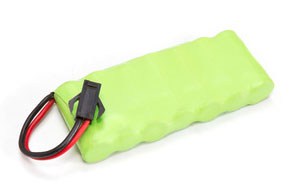PCM and BMS, what is the difference?
A lot of product designers (electric bikes, vehicles, street lamps,…) hesitate between a PCM (Protection Circuit Module) and a BMS (Battery Management System) in order to protect the battery pack of their devices. These 2 type of electronic boards are, however, very different in the way they work and with regard to the desired outcome.
What is a PCM (Protection Circuit Module)?
- A PMC is a stand-alone protective circuit.
- It is purely analogical, this means there is no software integrated into it.
- There is no possibility to switch-on or to switch-off the battery pack.
- There is no possibility to get a precise status update about the charging level of the battery pack.
- It cannot steer a charging unit or a consuming unit (electric motor, etc.).
- A PCM only rarely surveys the temperature level.
- It equalizes only in a very basic manner the different elements of an application.
- It is usually a low-cost product, produced in Asia.
Typical applications which make use a PCM: low-cost products like certain electrically assisted bikes or small electric tools.
What is a BMS (Battery Management System)?
- A BMS is an electronic board which is a lot more advanced than a PCM. A BMS contains a microcontroller with intelligent software integrated into it.
- It calculates and interprets different types of measurements like the SOC (state of charge) or the SOH (state of health).
- It offers a different level of protection (for example: it can distinguish between a normal and an abnormal event with regard to time).
- It contains a communication bus (I2C, CAN, MODBUS, …), allowing for the transfer of information.
- It has the facility of being steered by a main application.
- It has the capability to communicate with other BMS in order to form a battery of much larger capacity, whereby it adapts itself automatically to the different needs.
- It can go into standby mode in order to optimize its energy consumption.
- A BMS possesses an intelligent algorithm to equalize the different elements of an application.
- Via its communication bus, a BMS can steer chargers and/or consuming units (usually a motor) in order to optimize the utilization of the batteries and the behavior of the system.
- It offers the possibility to execute a complete diagnosis of the battery at any given moment.
- It can keep record of the battery life (counting errors, counting usage and storage time,)
Typical applications which make use a BMS: advanced products like robots, drones, electric bikes, electric vehicles, etc.
The numerous security and performance problems of PCM
The risk of overheating the battery pack
 Even though PCMs can be sufficient for certain small devices, the fact that they do not measure the temperature level of the cells can lead to serious problems. If a potential problem has not been identified, it can lead to the malfunction or even the explosion of a device. Not surveying the temperature level therefore depicts a serious safety problem.
Even though PCMs can be sufficient for certain small devices, the fact that they do not measure the temperature level of the cells can lead to serious problems. If a potential problem has not been identified, it can lead to the malfunction or even the explosion of a device. Not surveying the temperature level therefore depicts a serious safety problem.
An overconsumption of energy
While a BMS is able to go into standby mode in order not to consume energy. A complete discharge can destroy the battery pack in a way that it cannot be charged anymore.
Problems with regard to performance and reliability

Without any intelligence on the board, it is impossible to communicate with the battery pack of an application. This limits largely the possibilities of your device. Since it is, for example, not possible to survey the charging level of the battery with a PCM, you might be tempted to unnecessarily charge the battery pack.
Moreover, if you cannot optimize the consumption of the battery, it will very quickly lose its capacity. This considerably limits the lifetime and performance of your electrical device.
Which to choose: a PCM or a BMS?
PCM or BMS? Everything depends on the type of application and the level of security which is necessary for it. A low-cost product, for which the autonomy and the lifetime of the battery are less important, could be equipped with just a PCM. For an optimized energy management, for a higher security level, and for monitoring functions, a BMS should be chosen. The latter is especially important if your product will be in the hands of the public.

